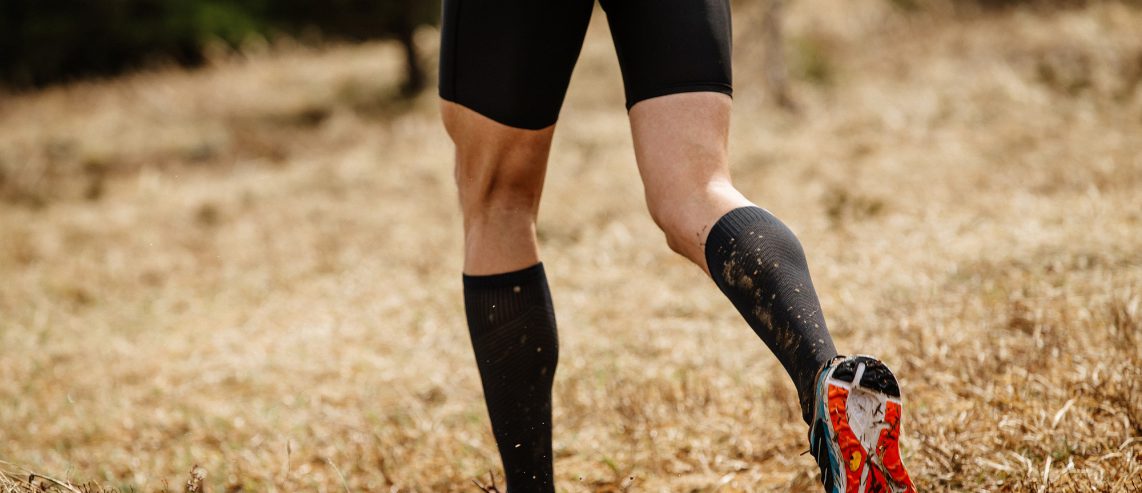It’s a staple for workout clothes, swimsuits, and shapewear, but compression clothing is more than tight clothing. Certain types of compression clothing may help circulation and provide other health benefits. Learn more about when and why you might want to use compression clothing.
What Is Compression Clothing?
Compression clothing is a special type of tight-fitting, elastic clothing that supports and restricts your body’s tissues. Medical-grade compression wear helps treat certain medical conditions. Other types of compression clothing include high-tech workout wear for athletes or undergarments that smooth bulges.
Medical-grade compression clothing
If your doctor recommends compression clothing for a medical condition, it’s important to buy medical-grade garments. These provide far more compression than compression stockings or clothing you wear for shapewear or working out.
Medical-grade compression clothes list the pressure ratings (how much compression the garment provides) on the package. Compression level is measured as mmHg, with higher numbers providing more pressure:
- Everyday athletic or shapewear compression clothes usually provide mild compression — between 8-15 mmHg. These don’t provide enough compression support for most medical conditions.
- Specialty compression clothing offers firm to extra-firm compression that ranges from 20-40 mmHg. You can find these at medical supply stores.
- Medical-grade compression wear provides the strongest pressure, 40-50 mmHg. You need a prescription for this type.
If you need extra supportive or medical compression clothing, your doctor will tell you which type and pressure to use. Different types of compression clothing include:
- Tights.
- Shirts.
- Socks or stockings.
- Arm or leg sleeves.
- Gloves.
- Bandages.
- Pregnancy belly bands.
- Shapewear undergarments.
Never Miss a Beat!
Subscribe to Our HealthBeat Newsletter!
Thank you for subscribing!
You can now select the specific newsletters you'd like to receive.
You are already subscribed.
Subscribe to more newsletters in our email preference center.
Sorry, an error occurred. Please try again later.
Get Healthy Tips Sent to Your Phone!
Compression Clothing and Circulation
One of the main reasons to wear compression clothing is to help blood circulation. It’s helpful when you sit or stand for long periods or if you have to stay in bed for any reason. Compression socks or tights have benefits for:
- Chronic venous insufficiency. With this condition, blood pools in your leg veins because valves in your veins don’t work correctly. It causes varicose veins.
- Deep vein thrombosis. This condition causes blood clots to form in your legs when you sit or are inactive for long periods.
“When you wear compression socks or stockings, they gently compress blood vessels near the surface of your legs,” said Chin-Chin Yeh, vascular surgeon, UPMC Heart and Vascular Institute, “That helps blood travel back to your heart against gravity.”
If your doctor recommends compression clothing to help circulation, make sure you buy the right level of pressure. Regular tights or socks with light compression might not be sufficient.
Athletes use compression clothing to help promote better blood circulation during or after a workout. Athletic compression wear also provides extra support to muscles and joints, and it might help with recovery. Some feel it helps improve performance, but there’s no solid research to support that.
Other Compression Clothing Benefits
Besides improving blood circulation, compression clothing helps reduce swelling, also known as edema. This happens when fluid leaks out of tiny blood vessels called capillaries and builds up in your tissues.
Edema often happens in your feet or leg when you sit or stand for too long. It might happen because of pregnancy or certain health conditions (like congestive heart failure). Compression socks keep fluid in your capillaries and out of your tissues.
Lymphedema is another type of swelling your doctor may advise you to manage, in part, with compression garments. This is when protein-rich fluid leaks from your lymphatic system and collects in your tissues. It might happen after surgery or any other type of trauma to your lymphatic system.
Doctors frequently recommend medical-grade compression clothing to help with lymphedema. As with edema, it helps push fluid back into the lymphatic system.
Other uses for compression clothing include:
- Helping skin wounds or scars heal better.
- Supporting joints like knees, elbows, or wrists.
- Supporting your belly and back during pregnancy.
Tips for Choosing and Wearing Compression Clothing
When choosing compression clothing to manage a medical condition, you should talk to your doctor first. They can advise you on the correct product and pressure level. Products that provide too little pressure aren’t effective for some treatments, but also, more pressure isn’t always better.
Another thing to consider is your comfort level and the part of your body you’ll wear it on. Those rated close to 50 mmHg might be too tight, causing numbness. Garments like compression shirts with too much pressure might cause breathing problems.
Most people find compression clothing rated less than 29 mmHg comfortable. At that amount of pressure, you can wear compression clothes like tights, socks, or shirts all day without problems.
For some medical conditions, it’s crucial to wear compression clothing for several hours or all day. Your doctor can tell you how long to wear it to treat a medical condition.
Keep in mind that the elastic fibers that provide compression can wear out over time. You should care for and replace compression clothing according to the manufacturer’s guidelines.
Editor's Note: This article was originally published on , and was last reviewed on .
Sources
About UPMC
Headquartered in Pittsburgh, UPMC is a world-renowned health care provider and insurer. We operate 40 hospitals and 800 doctors’ offices and outpatient centers, with locations throughout Pennsylvania, Maryland, New York, West Virginia, and internationally. We employ 4,900 physicians, and we are leaders in clinical care, groundbreaking research, and treatment breakthroughs. U.S. News & World Report consistently ranks UPMC Presbyterian Shadyside as one of the nation’s best hospitals in many specialties and ranks UPMC Children’s Hospital of Pittsburgh on its Honor Roll of America’s Best Children’s Hospitals. We are dedicated to providing Life Changing Medicine to our communities.

